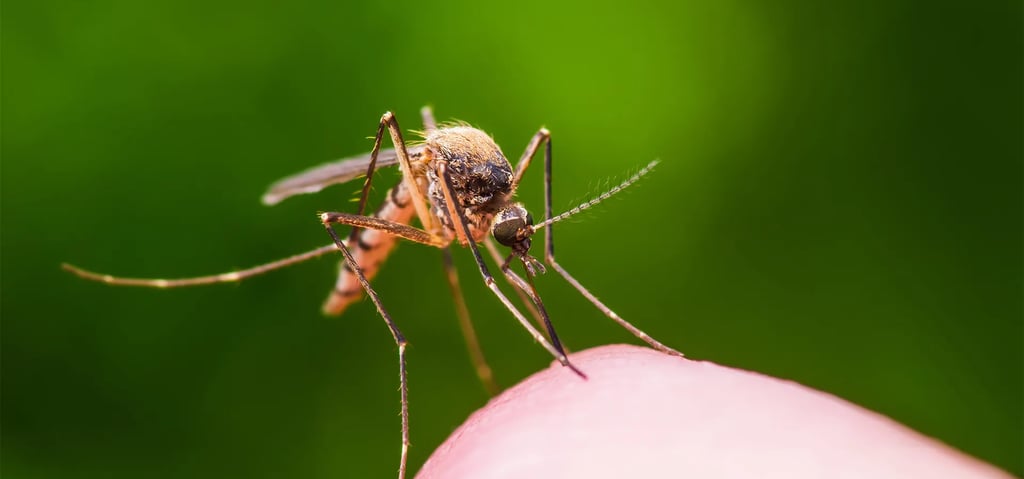Understanding Effective Mosquito Control: Prioritizing Safety Over Insecticide Spraying
Controlling mosquito populations at the county and city levels requires a balanced approach that prioritizes community education, habitat management, and sustainable methods like biological controls. Public engagement is essential, as residents can help reduce breeding sites by eliminating standing water. Natural predators, such as mosquito fish, offer an eco-friendly solution. Insecticide spraying should be a last resort due to its harmful effects on ecosystems and the risk of mosquitoes developing resistance. A comprehensive mosquito control plan should minimize environmental harm by focusing on long-term, sustainable solutions.
9/5/20243 min read


Effective Mosquito Control at County and City Levels
Controlling mosquito populations is not just a nuisance issue; it’s a public health priority, particularly at the county and city levels where prevention of mosquito-borne diseases is critical. An effective mosquito control strategy requires a multifaceted approach that balances public education, habitat management, biological control, and selective interventions like insecticide use. Here, we explore how local governments can manage mosquito populations sustainably while minimizing harm to ecosystems.
Community Awareness and Habitat Management
At the heart of successful mosquito control is public engagement. Local governments must invest in education programs that inform residents about how and where mosquitoes breed and how they can help reduce mosquito populations by eliminating standing water around their homes. Simple actions like removing containers, unclogging drains, and regularly cleaning birdbaths can make a huge difference in disrupting mosquito breeding cycles.
Furthermore, encouraging the use of natural predators, such as mosquito fish in ponds and bats through bat houses, can play an integral role in reducing mosquito numbers naturally. These measures focus on controlling mosquito populations without introducing chemicals into the environment, making them a first line of defense in a sustainable mosquito management strategy.
Insecticide Spraying: The Last Resort
While insecticide spraying is often perceived as the quickest way to control mosquito populations, it should always be a last resort. Widespread spraying has significant downsides—it indiscriminately targets many insects, including beneficial pollinators and predators that help naturally control pest populations. This disrupts the local ecosystem and can result in unintended consequences, such as declining bee populations or a rise in other pests due to the loss of natural predators.
Additionally, over-reliance on insecticides can lead to insecticide resistance in mosquito populations, which makes them harder to control in the long term. As mosquito resistance builds, the effectiveness of the chemicals decreases, leading to more frequent and intense spraying—worsening the problem over time.
Implement Targeted spraying programs based on mosquito surveillance data, which can identify hotspots where control measures are most needed using EPA-approved insecticides in high mosquito activity areas, especially during peak mosquito season. Spraying is typically done in early mornings or evenings when mosquitoes are most active.
The Harmful Effects of Insecticides on Ecosystems
The ecological impact of insecticide use cannot be overstated. Beyond just mosquitoes, these chemicals can affect birds, fish, and other aquatic life when they run off into streams, lakes, or wetlands. Aquatic ecosystems, in particular, are sensitive to contamination, and the introduction of toxins can disrupt the delicate balance of these environments. Non-target insects, such as bees and butterflies, are also at risk, with far-reaching consequences for biodiversity and agriculture due to their essential role in pollination.
Because of these risks, local governments must carefully consider the broader environmental consequences before resorting to widespread insecticide use. A sustainable mosquito control plan should aim to minimize harm to these non-target species and preserve local biodiversity.
Sustainable Mosquito Control: A Multifaceted Approach
To ensure that mosquito control is both effective and environmentally friendly, counties and cities should prioritize alternative strategies. Biological control methods, such as releasing mosquito-eating fish into ponds or using bacteria-based larvicides like Bacillus thuringiensis israelensis (Bti), are targeted solutions that do not affect other wildlife. Additionally, using innovative technologies, such as mosquito traps or sterilization programs that reduce mosquito reproduction, can be integrated into broader plans to control the population.
The focus should be on long-term, sustainable methods that engage communities, protect biodiversity, and reduce reliance on insecticides. By combining public education, habitat management, and biological controls, local governments can create mosquito control programs that not only reduce pest populations but also protect the broader environment.
In conclusion, while insecticides may offer a temporary solution, they should only be used as a last resort due to their potential to harm ecosystems and foster insecticide resistance. By prioritizing sustainable methods, counties and cities can better manage mosquito populations while preserving local ecosystems for future generations.
